You know that feeling you get when you’re jealous of people who’ve never read your favourite book or watched your favourite film because they have the wonder of first-time discovery ahead of them? Well, that’s how we feel about people heading to Bali for the first time! Oh, to go back to when we’d yet to visit this magical island so that we could discover it anew!
But, our jealousy aside, travelling to a new place for the first time can be overwhelming. The joy of planning can get lost in the anxiety that you’ve forgotten something crucial, booked the wrong location or not accounted for something important. So to alleviate your worries, we’ve put together this complete guide to Bali for first-timers so you can start to feel less stressed and more prepared for your first (of many) trips to Bali.
So, let’s dive into everything you need to know for your first visit to Bali!
Welcome to Bali
Bali is a dream holiday destination that appeals to travellers from all over the world. With its enchanting beauty, rich cultural heritage, idyllic beaches, lush green landscapes, vibrant festivals, and warm-hearted locals, Bali casts a spell that regularly leaves visitors in awe. Whether you seek adventure, relaxation, or spiritual enlightenment, this island paradise has it all.
And the good news is that Bali is an easy place to visit. The island has a laid-back attitude, a lot of experience welcoming tourists, and friendly people famed for their hospitality. So chances are, rather than getting stressed out, you’re going to feel right at home.
Which area’s best for you?
There is simply no bad place to visit in Bali. Throw a stone in any direction, and you’ll find stunning beaches, beautiful scenery, breathtaking cultural sights and fantastic activities.
However, the island is quite large – 5,780 km² in fact – and the landscape and vibe differ from one area and village to the next. So, while we believe every inch of this island is worth a visit, certain areas might suit you better depending on your party’s ages, tastes, and expectations. So, let’s take a closer look at where you might want to stay.
Best places in Bali for families
Travelling in Bali with children is a fun experience as the legendary island hospitality goes double for children, and family-friendly accommodation is abundant all over the island. However, we have found that when friends visit with children, some areas cater to their needs better than others.
You’ll probably want to stick to the south of Bali as it’s the most popular area with the most amenities and facilities, including well-stocked shops and pharmacies selling anything you might need or have forgotten. It’s also close to the airport, so you can keep travel times to a minimum.
Nusa Dua is the place for huge family-friendly yet luxurious resorts complete with kids’ pools, kids’ clubs, and babysitting. The beaches in this area are beautiful, clean and have safe, calm waters perfect for little paddlers. Head along the coast to Tanjung Benoa if you still want the resorts but a few more beach activities and water sports.
Sanur is known for its welcoming resorts, family-friendly restaurants, convenient shops, beautiful beaches and calm waters.
Jimbaran offers a good mix of family hotels and five-star resorts and has a lovely white sand beach with safe waters. It also offers more of a glimpse of the real Bali than Nusa Dua or Sanur. The area is famous for its seafood restaurants lining the beach, offering an unforgettable dining experience alongside the stunning sunset. Plus, this area is super close to the airport, so it’s ideal if you’re only visiting for a few days.
Seminyak and Legian are good if you have a range of ages to entertain. They offer stunning high-end accommodations and beaches full of activities while being quieter than neighbouring Kuta.
Ubud is the place to go if you want your kids to embrace the cultural side of Bali. It might not have beaches or water parks, but you can stay in spectacular jungle accommodations with kid-friendly swimming pools. And the Sacred Monkey Forest is a magical place for children and adults alike. Also, don’t be afraid to take kids to a cultural show or two. Balinese traditional dances can be long, but they’re also dramatic and involve fire, magic and demons that will mesmerise children. Ask for advice at your accommodation for the best family shows.
And for older kids and teens, Kuta is the place to be. Energetic and vibrant, it’ll keep everyone entertained at all times. The lively beach has hair braiders, surf lessons, T-shirt stalls, and trinket hawkers that will keep kids amused, while some of Bali’s most popular attractions – such as Waterbom water park, are located here. There are also abundant restaurants of all styles to suit everyone’s tastes. However, the traffic and pace may be too much for families with young children.



Best places in Bali for couples
When it comes to romantic escapes, it’s less about finding the best location and more about the perfect accommodation, and Bali has some incredible choices! This is an island of fully-staffed private villas, secluded jungle retreats, luxurious beachfront resorts and five-star spas where you and your loved one can relax in style. But if you do want some location ideas, start with:
Ubud, the cultural centre of Bali and a serene, peaceful place to spend a romantic break. The town features spectacular accommodations, some of the island’s best restaurants, and stunning natural surroundings.
Seminyak is where the beautiful people hang out in Bali. It’s the place for couples who want to see and be seen at high-end restaurants, trendy bars, upscale resorts, and sophisticated boutiques.
Petitenget is a chic area similar to neighbouring Seminyak. It is home to cosmopolitan bars, fashionable boutiques, high-end restaurants and some of Bali’s most luxurious beach clubs. It’s great for couples who like the finer things in life.
Uluwatu is known for its dramatic cliffs, big wave surfing and open-air temple theatre. It has some incredible cliff-side accommodations boasting stunning views and luxurious rooms.
Nusa Dua is for couples who just want to relax on soft sand beaches and dream the days away in private cabana beds with cocktail service.
LGBTQ+ couples will find Bali to be a friendly and welcoming place. Both Ubud and Seminyak have well-established LGBTQ+ communities, with Seminyak offering inclusive accommodations, gay bars, and drag nights.



Best places for surfing in Bali
Bali and surfing go hand in hand, and you won’t be on the island long before you see someone strolling along, surfboard under their arm, chatting about the swell.
Kuta is one of Bali’s most popular surf spots because it has consistent waves for all abilities, the highest concentration of surf schools and rental shops, and plenty of knowledgeable locals happy to advise you on where best to hit the water for your skills.
Canggu has a vibrant surfy culture and waves for all abilities. It’s home to Echo Beach and Batu Bolong surf breaks, and you’ll find no shortage of surf schools, rental shops and surf bars to hang out in and watch the epic sunsets and the surfers.
Just down the coast is Berawa Beach, another spot popular with all abilities. But if you want quieter waters head up the coast to hit two less-developed surf spots: Balian, with gentle fun waves for all levels, and Medewi, ideal for longboarders, intermediates, and experts looking to chill away from the crowds.
The Bukit Peninsula – the bulbous southern tip of Bali – is home to an abundance of epic surf breaks. Start with the incredibly scenic Balangan Beach where you’ll find one of the longest left hand breaks on the island. Then continue into the Pecatu region, where you’ll find some of the most famous surf spots on the island: Bingin, Impossibles, Padang Padang, and Uluwatu.
Surfers from all over the globe head to Bali purely to tackle the world-class waves at Uluwatu. This area is not for beginners, but sitting in the cliff top bars watching the pros in action is a must for every visitor to the island.
During the wet season, head to Nusa Dua on the east side of the Bukit Peninsula or Keramas on the less explored east coast. The waves can get fast and powerful here when the conditions hit right, and you’ll find all the amenities you need without the crowds present at the more popular spots.



Best places for diving and snorkelling
Bali is one of the best places for diving in the world thanks to its warm waters, great visibility, diverse dive sites and abundant marine life, including rays, sharks, turtles and sunfish! Here are some of the best spots for underwater explorers:
The Amed Coast in the east is home to spectacular snorkel sites, some of the best diving in Bali and a growing freediving scene. Head to Jemeluk Bay to snorkel the Japanese shipwreck and coral gardens right from the beach. Or head north to Tulamben to dive the Liberty shipwreck, one of the best – and most accessible – wreck dives in the world.
Nusa Penida island is ringed by fantastic dive sites, including one that is a Mola Mola cleaning station, allowing divers to see the huge sunfish up close.
Pemuteran is a little village in the northwest corner of Bali that’s a paradise for divers and snorkelers. The area is home to over 20 fantastic dive sites accessible from the beach or by a short boat ride. It’s also the jumping-off point for trips to Menjangan Island, where you’ll find dive and snorkel sites for all abilities, excellent visibility, marine life of all sizes, soft corals, caves, wrecks, walls and drop-offs.
Padangbai is better known as the Lombok ferry departure point, but it’s also an underrated hub of excellent diving and snorkelling. The little village has a local, laid-back vibe, some lovely beaches and plenty of dive operators waiting to take you to the area’s wide selection of dive sites. I once snorkelled off the main beach here while waiting for a ferry to the Gili Islands and saw reef sharks, turtles and cuttlefish!

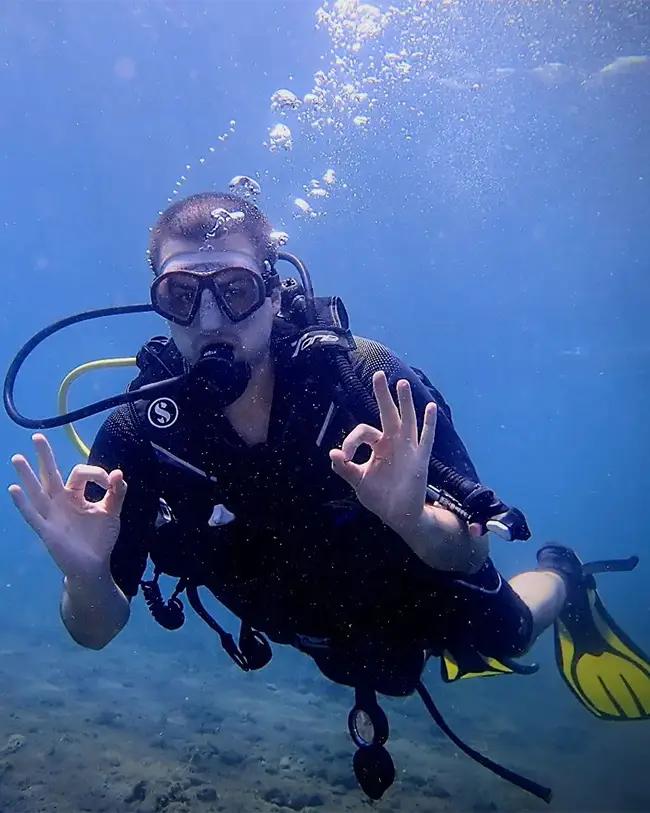

Best places in Bali for foodies
The food in Bali is fantastic and varied. You can sample delicious local dishes like nasi goreng (fried rice), mie goreng (fried noodles), and satay (grilled meat skewers) at roadside carts or head to high-end restaurants offering refined local, fusion and global cuisines.
Jimbaran is famous for its fresh seafood served in beachside warungs at sunset.
Seminyak is the home of the sophisticated palette and the place to sample fusion cuisines from around the world.
Petitenget offers endless choices along the restaurant-filled Jalan Batu Belig. Choose from cuisines of all origins and vibes raging from five-star to old-school warungs.
Canggu is the place for cafe culture and endless, excellent brunches.
But it’s Ubud that’s made a name for itself as the foodie hub of the island. It specialises in fantastic local delicacies like slow-roasted crispy duck, and babi guling, a roasted suckling pig that you’ll return for day after day.
Ubud celebrates these local dishes alongside an eclectic vegan and health food scene specialising in organic ingredients sustainably sourced. This blend of culinary styles means eating out in Ubud never gets boring.



Best places in Bali for culture vultures and art lovers
This one has no competition. Ubud is undeniably the cultural and artistic heart of Bali. A hub of expat and local creatives, Ubud is a captivating place full of workshops and galleries displaying diverse artworks both modern and traditional, from paintings and sculptures to fashion and textiles.
Ubud is also the centre for Balinese traditional music and dance. The sounds of Gamelan music serve as the backdrop to daily life, and you can take your pick of cultural performances every evening, some taking place in the atmospheric settings of the town’s temples.



Best places in Bali for wellness and yoga
Many people are drawn to Bali for its reputation as a centre of wellness, spirituality and healing. This ethos is pervasive throughout the island, and you’re always to a yoga class or traditional Balinese massage.
You can choose to practise yoga in the clifftop pavilions of Uluwatu, where the crashing of waves forms an atmospheric soundtrack, and you can pair a yoga retreat with a surf trip. Head to Seminyak for air-conditioned studios and modern practices, or Canggu for an abundant choice of classes, many with a focus more on fitness than spirituality.
Take classes with the locals in Sanur for a laid-back vibe, or head to Amed for mindfulness, meditation and yoga with a view of Mount Agung.
However, if you’re searching for the island’s hub of spirituality and wellness, you’ll want to stay in Ubud. Here yoga comes with a jungle backdrop, you can take your pick of Ayurvedic therapies and holistic retreats, and you can attend the annual Bali Spirit Festival. It’s also the place to stay if you want to visit a traditional Balinese Healer.

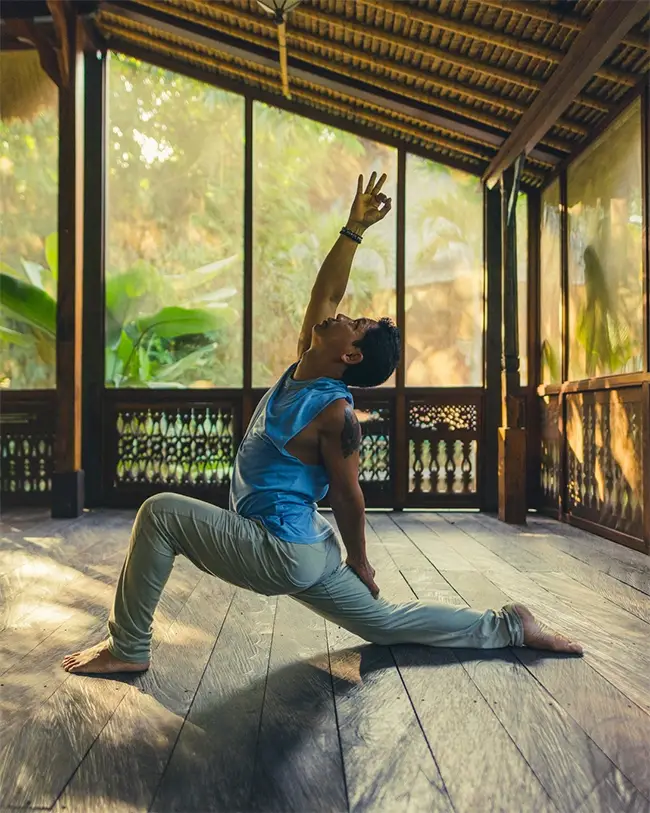
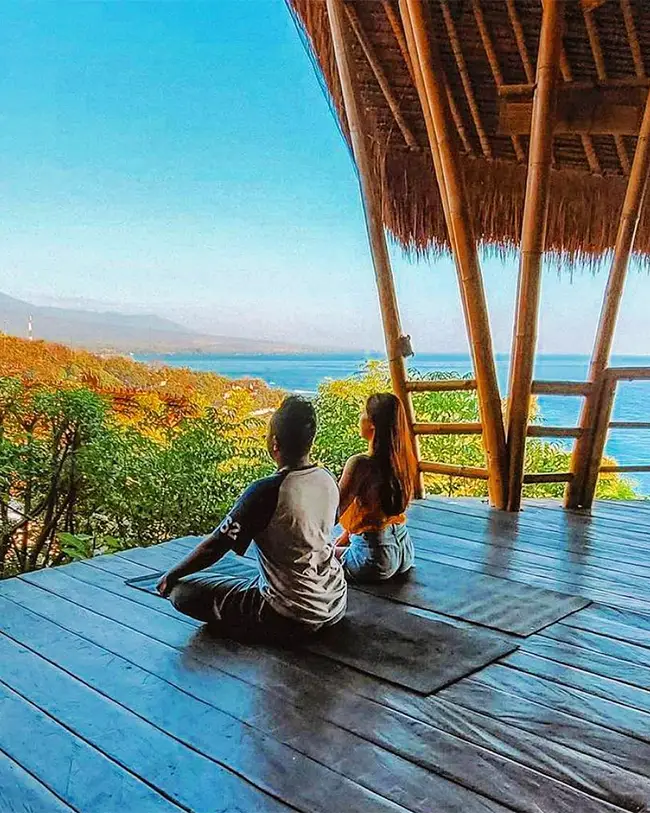
Best places in Bali for budget travellers
Bali is known for its wallet-friendly nature, and one of its main draws is that you can stay in luxury accommodation for a fraction of the price that a similar standard would cost you in Europe or the US.
However, if you’re looking to do things on a shoestring, your best bet is to stay in Kuta. Here you’ll find hostels catering to backpackers, and the sheer abundance of accommodation options keeps prices competitive. Similarly, the vast range of restaurants, street food vendors, and dive bars allow you to eat and drink cheaply.
If you want a budget beach resort and don’t mind travelling to find it, Lovina on the north coast is a lovely laid-back area where prices have yet to catch up to the south coast.
Your other option is to stay in Denpasar, where accommodation prices are low simply because not many tourists choose to stay here. Those that do, will find plenty of cultural sights and activities, a chance to eat, drink and shop like a local and easy access to both the airport and the activities of Kuta.
Top tip for budget travellers: fan-cooled rooms are often much cheaper if you can cope without air conditioning.
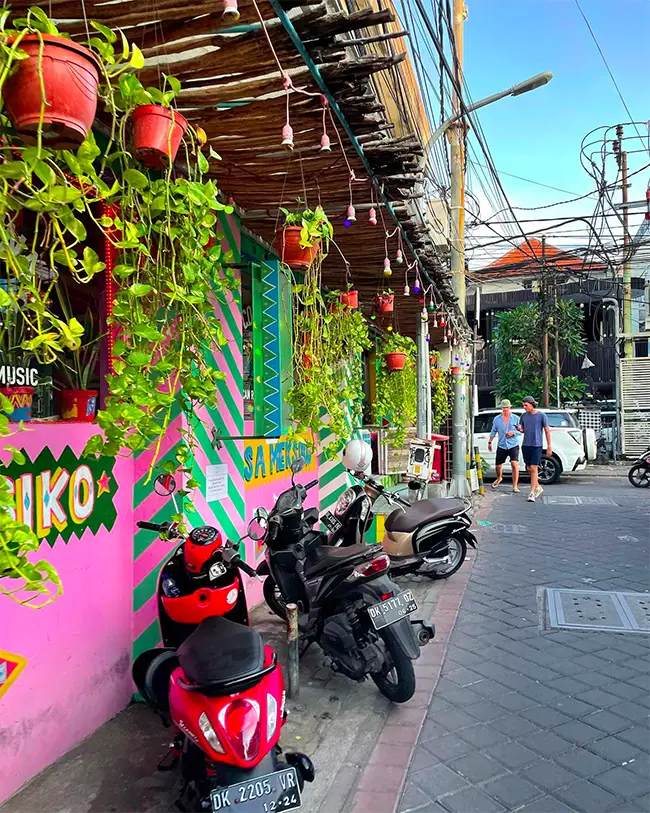
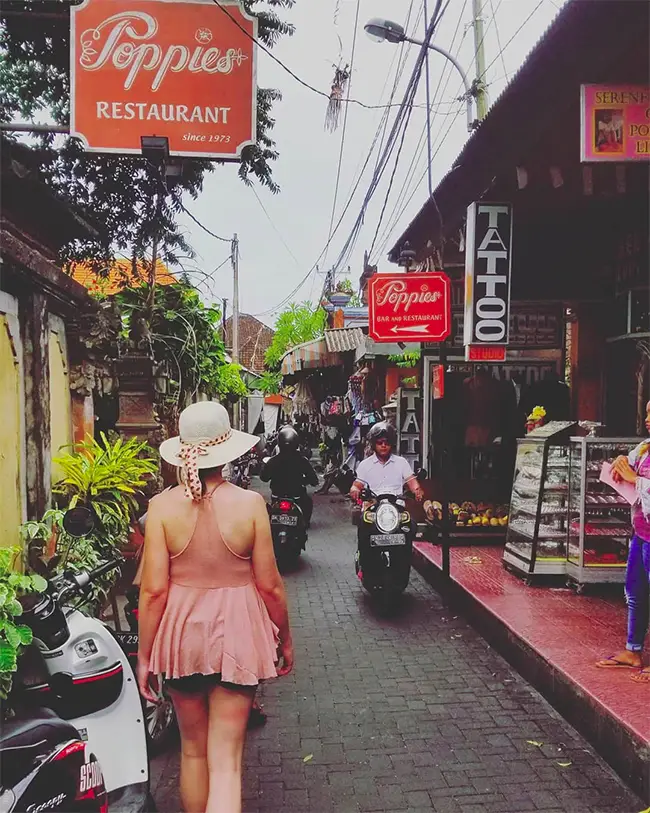
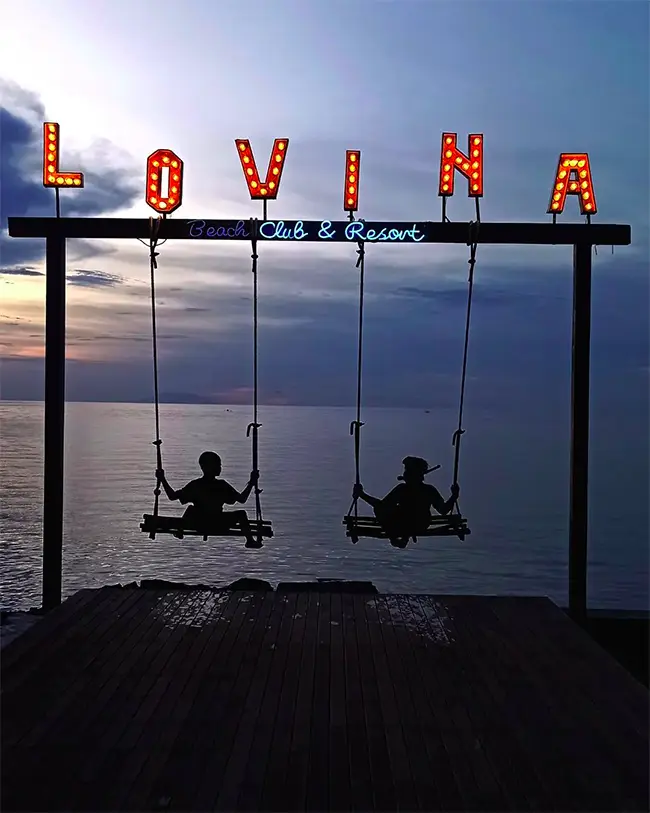
Best places in Bali off the beaten track
If you want to avoid the tourist crowds in Bali, you have a few options. First, you can head to Denpasar, the island’s capital. It’s certainly not quiet but it is overlooked by the majority of tourist visitors to the island. Staying there allows you to glimpse Balinese urban life in a way you can’t in the resort areas.
The further you travel along the south coast, west of Kuta, Seminyak, and Canggu the quieter things become. Canggu used to be the peaceful spot to stop and unwind, but tourism and development are booming there now, and even the next regions along, Seseh and Cemagi, are starting to see their rice fields being replaced by villas.
So push further west to find your peace further up the coast at Balian Beach, a surfer enclave with a few shops, warungs, and accommodations that’s yet to be struck by the tourism boom.
On the east coast, Amed and the surrounding beaches are the place to be for those wanting to kick back, drop out and enjoy the Bali of bygone years. More luxurious accommodations and higher-end restaurants are starting to pop up, but for now, it maintains a peaceful, meditative quality perfect for relaxation.
And for intrepid explorers, north is the way to go to ditch the crowds and visit places most visitors never see. The two biggest settlements are the diving and snorkelling hub of Pemuteran and the sleepy beach town of Lovina.

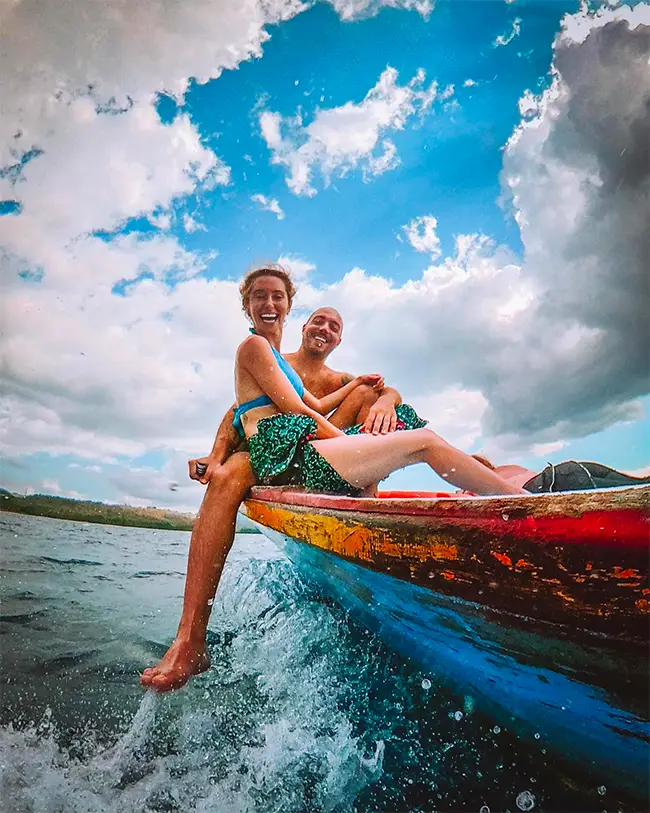

Best places in Bali for nightlife
If you’re looking to party, you want to stick to the South West coast. As wonderful as Ubud is, you won’t find much nightlife there beyond a few after-dinner drinks and acoustic live music.
But on the coast, it’s a different story. All along the coastline are beachfront venues selling cold Bintang and happy hour cocktails alongside epic sunset views.
Head to Canggu and Berawa for your choice of fantastic beach clubs filled with pools, restaurants, bars and DJs where you can party the whole day away. Once the sun sets, head into the town to explore the achingly hip bars and ever-growing late-night club scene.
Legian has a good selection of bars, clubs and beach parties, while Seminyak and Petitenget are the places for glamorous parties in premium venues with world-class DJs providing the soundtrack.
But, if you’re really looking to cut loose, it has to be Kuta, where the nightlife is vibrant, energetic and legendary. Bar hop your way through the myriad venues making the most of drink deals and offers until you end up in a super club dancing to the latest beats until dawn.



Best places in Bali by area
- North Bali – for off-the-beaten-track explorers, nature lovers, diving and snorkelling.
- West Bali – for endless beaches, sea temples, laid-back living, peaceful surf spots, and spectacular sunsets.
- Central Bali – for mountains, jungles, volcanoes, hiking, rice terraces, and waterfalls.
- Ubud – for holistic health, yoga and wellness, arts and culture, fantastic food, and jungle living.
- East Bali – for peaceful but growing in popularity spots, snorkelling, diving, temple exploring, yoga and meditation.
- South Bali – vibrant Kuta, sophisticated Seminyak, beachfront resorts, nightlife, shopping, airport access and the island’s most famous surf spots.
Bali’s amazing attractions
Part of Bali’s enduring appeal is that it has something for everyone. So whatever style of attraction you’re looking for from your holiday – be it natural, cultural, or adventurous – we guarantee you can find something to suit you.
Natural wonders
Bali is an island over-endowed with natural splendours that cannot fail to amaze even the most well-travelled visitor.
Beaches
Take your pick from the sheltered stretches of soft white sand around Sanur to the dramatic cliff-backed coves of the Bukit Peninsula to the shimmering volcanic black sands of the east coast. Watch the legions of surfers in action at Echo Beach, party till the sun goes down with a raucous crowd in Legian, or find a secluded cove on the far west or north coast. Whatever your beach vibe, you’ll find the perfect spot in Bali.
Mountains and volcanoes
Bali is a volcanically active island, a fact that contributes hugely to its richly fertile and dramatic landscape. If you want to get up close to an active volcano, you can climb Mount Agung, the highest peak on the island at 3,142 metres high, or its smaller but no less active neighbour Mount Batur at 1,717m high.
I did a sunrise hike of Mount Batur on my first trip to Bali, and it was an incredible experience. We scaled the volcano in the dark, then cooked our breakfast in the steam rising from the crater as we waited for the sun to come up and showcase the stunning views. A truly unforgettable experience.
Hot springs
The volcanic landscape leads to another remarkable phenomenon, natural hot springs! Thermal-heated waters bubble up through the ground infused with minerals and form pools that provide bathers with a therapeutic and cleansing experience.
Bali boasts a variety of hot springs, from rugged, rough;-hewn rock pools to elegant spa complexes to suit your tastes.
Tip: plan your hot springs visit for after your volcano climb for a soothing reward for your exertions.
Rice fields
The verdant green of Bali’s rice fields has to be seen to be believed. They are a mesmerising sight, and it’s easy to see why they’re such a common subject for Bali’s artists.
One of the most popular spots is the Tegallalang Rice Terraces outside of Ubud, where visitors can spend a beautiful day hiking through the tranquil valleys trying to capture the phenomenon on camera.
Another top spot is the Jatiluwih Rice Terraces in West Bali, a UNESCO heritage-listed site that covers over 1,400 acres of stepped ground.
Jungles and waterfalls
The interior of Bali is filled with thick, lush rainforest and jungle interspersed with cascading waterfalls that are not just beautiful but offer a refreshing place to swim after a hot jungle hike.
The north of the island holds many seldom visited yet spectacular waterfalls, but if you’re looking for more accessible wonders, head to Ubud. The area surrounding Ubud contains many stunning waterfalls which can be explored in one day under your own steam.
Hire a private driver for the day or go by scooter, download a Google maps route, and head out chasing waterfalls.


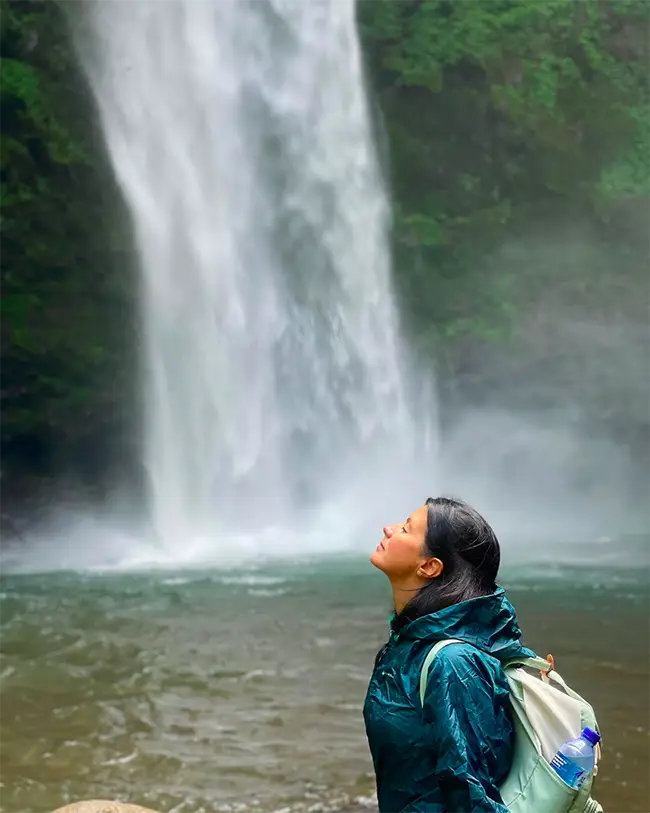
Family friendly attractions
Bali’s beautiful beaches with their abundant watersports, volleyball courts and surf lessons might be enough to keep your family entertained all holiday, but if you need something more, check out these fun spots for all ages:
Waterbom Bali in Kuta, is Asia’s premier water park, packed with slides, rides, pools, and playgrounds. Plus a lazy river, sun loungers, gazebos and restaurants for those who’d rather chill out.
Finns Recreation Club is a sprawling entertainment complex in Berawa. It includes world-class sports and fitness facilities, a playground, a waterpark, a trampoline centre and a spa. Or head to Finns’ other location, its waterfront beach club, where you’ll find a surprisingly family-friendly space with separate kids and adults pools and a choice of restaurants and entertainment.
If you want a break from the sun, visit Denpasar for indoor activities like the 3D Art Museum or Upside Down World. Or head to the breezy mountainous region of Bedugul, where you can wander the 150 hectares of the botanic gardens while kids play on the adventure playground.
And if your little ones love animals, the Monkey Forest in Ubud is an excellent place for kids to learn about and see the mischievous macaques up close.



Cultural attractions
Bali has a rich cultural heritage, and there are endless culturally significant sights to see on the island. Some of the most popular activities for culture hunters are:
Watching cultural performances of dancers and gamelan orchestras in Ubud or catching a traditional Kecak Dance at the incredible open-air temple theatre on the cliff tops of Uluwatu.
Visiting some of the many incredible temples on the island, such as Tanah Lot, one of the chain of sea temples that lines the Balinese south coast. Or Pura Lempang made Instagram famous thanks to its stunning ‘gates of heaven’ temple gates.
Witnessing the bathing rituals at Tirta Empul, a sacred water temple famous for its purification baths where you can observe the rituals or bathe yourself in one of the public pools.
Wandering amidst the water gardens of Tirta Gangga water palace. Strolling the stepping stone paths across pools filled with koi, lotus flowers, water features, and intricate stone sculptures. All within view of the rice fields and mountains of East Bali.
And don’t miss Goa Gajah or the ‘Elephant Cave’. This ancient archaeological site near Ubud dates back to the 9th century but was only rediscovered in the 1920s. Get a glimpse into Bali’s spiritual past as you see the stone carvings, bathing pool, and meditation chambers.


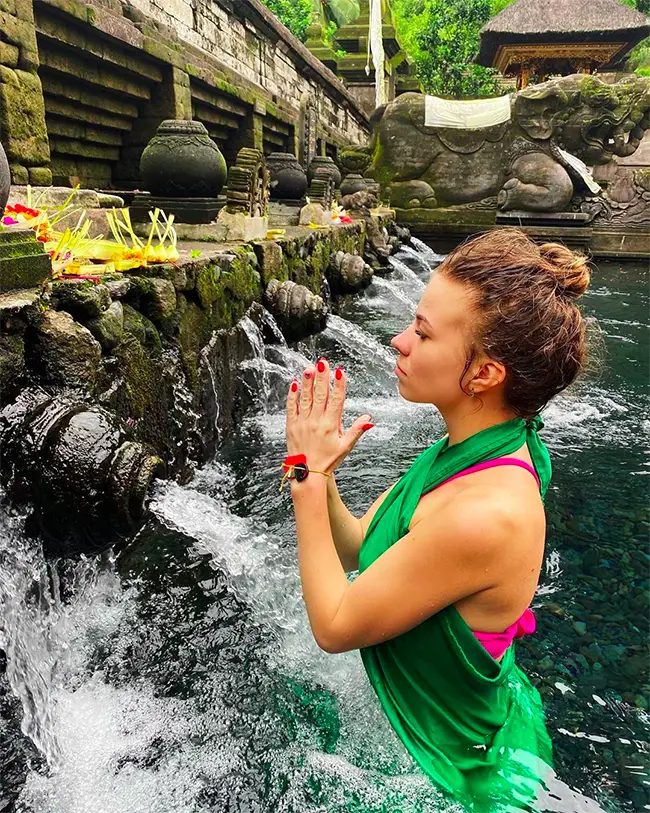
Animal attractions
If, for you, travelling is all about getting up close and personal with the local wildlife and rare animals, Bali has a few treats up its sleeve.
First, get in the water. Snorkelling in Bali can show you reef sharks, turtles, rays and all manner of colourful tropical fish. And if you go scuba diving, you can also see huge mola molas and maybe even some majestic manta rays!
If you don’t see enough turtles in the water, head to the Turtle Conservation and Education Centre in Serangan to see the work they’re doing to protect Bali’s turtles and give hatchlings the best chance of survival.
Or how about spending a day with elephants? Despite not being native to Bali, many elephants live on the island in sanctuaries, rescued from nearby Sumatra, where they are at risk from habitation destruction and poachers. Their introduction to Bali has been so successful that they are now an enduring symbol of the island, and seeing them is on most people’s wish list.
Bali Safari & Marine Park is the place to see exotic animals up close, including elephants, komodo dragons, and tropical birds. You can take day and night safaris, watch feeding demonstrations, learn about conservation, and even stay overnight in the park. There’s also a water park and fairground that kids will love.
And lastly, you can’t leave without visiting the Ubud Monkey Forest, a haven for hundreds of long-tailed macaques. Wandering through the shady acres discovering moss-covered temples and eerie carved statues while the monkeys roam free around you – and occasionally right over you – is an incredible experience.

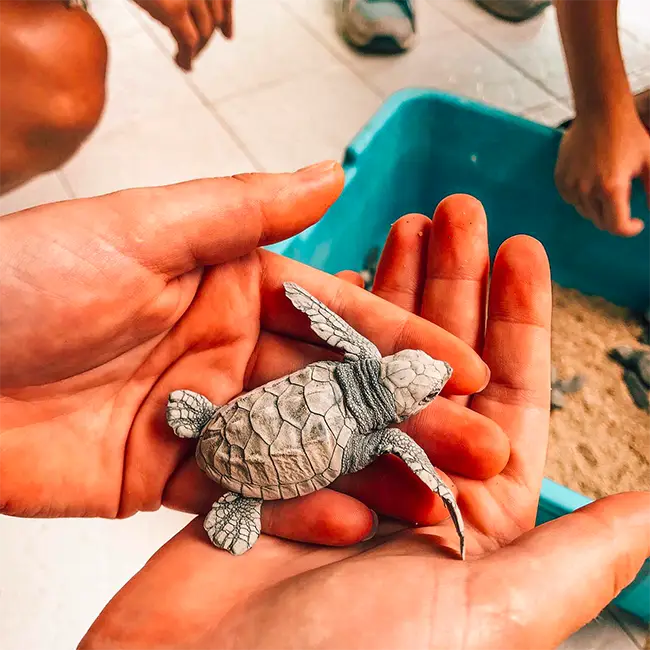

Adventure sports
Many people come to Bali to relax, unwind, and engage in yoga and meditation, but that’s not for everyone. If you want your vacation to have a more energetic vibe, Bali’s got you covered.
Hit the beaches for world-class surfing, test your skills at kitesurfing or get under the water for snorkelling, diving and freediving. You can also go white water rafting in the rivers around Ubud, go canyoning the waterfalls of West Bali, take ATV tours through the jungles of the central island and leap off cliffs to paraglide over South Bali.


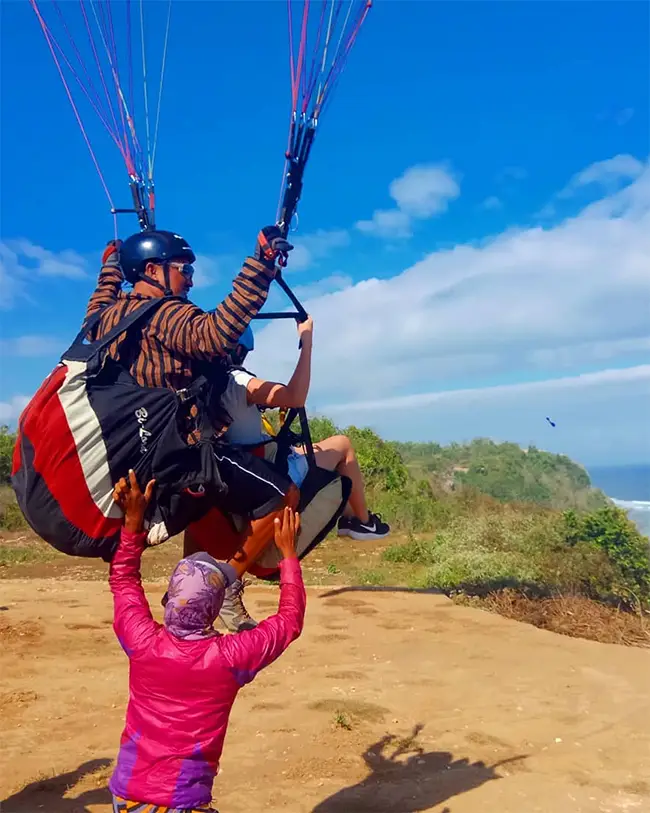
Cultural festivals and events
Bali is a place that loves to celebrate, and its calendar is packed with events and festivals of a religious, spiritual and secular nature. Here are 10 festivals worth checking out:
- Chinese New Year – this joyful celebration in January / February is a wonderful chance to witness Bali’s multiculturalism in action. The colourful event is marked by the decorating of Chinese and Buddhist temples, vibrant parades through the streets, dragon dances and cultural performances and street stalls and pop-up restaurants selling delicious food.
- The Bali Blues Festival – Blues might not be the music that springs to mind when you think of Bali, but this festival attracts music lovers from around the world to celebrate local and international musicians in a spectacular Nusa Dua setting.
- The Bali Arts Festival, held annually from June to July, celebrates Balinese traditional and modern artistic culture. The festival takes place in Denpasar and showcases a vibrant blend of art, culture, music, crafts, fashion and dance.
- The Bali Spirit Festival is a globally recognised event that unites yoga, music, and dance in a week-long celebration of holistic health and well-being. Held in Bali’s wellness hub, Ubud, it is a fantastic chance to meet like-minded people and participate in classes, workshops, and inspirational talks.
- Neypi, or Balinese New Year, is the quietest day on the island. It’s a day of peace and reflection in which all activity stops and almost all businesses close. But the night before Neypi, Ngrupuk, is marked by raucous parades through the streets with music, chanting and fireworks. The parades also include the fantastic and terrifying Ogoh-Ogoh puppets, huge artistic creations representing evil spirits. These are danced through the streets before being set alight at the end of the evening, representing the triumph of good over evil ahead of the new year. It’s a fascinating time to see Balinese spirituality in action.
- Bali Kite Festival is a fantastic colourful spectacle in which Balinese locals engage in competitive and performative flying of giant homemade kites to give thanks to the Hindu gods. It takes place around Sanur in July and August but can sometimes continue as late as October. It’s a popular event for kids who will love the chance to try flying their own kites.
- The Sanur Village Festival showcases the region’s cultural and artistic heritage. It began as a way to draw tourists to the area but is now a popular event for locals and tourists alike.
- Galungan and Kuningan – this 10-day celebration of the triumph of good over evil is one of the largest festivals of the Balinese Hindu calendar and has huge spiritual significance. The dates of this festival change each year, but decorative bamboo poles called “Penjor” will appear outside houses and in the streets, signifying its arrival.
- Lovina Beach Festival – during this three-day festival, this sleepy area comes alive with parades, concerts, exhibitions and events showcasing the culture and traditional practices of this region.
- Ubud Writers and Readers Festival is Southeast Asia’s premier literary festival and a must for all lovers of the written word. It’s a chance to celebrate writers, poets, artists and activists from all over the world and perhaps discover work from authors, cultures and regions you’ve yet to explore.
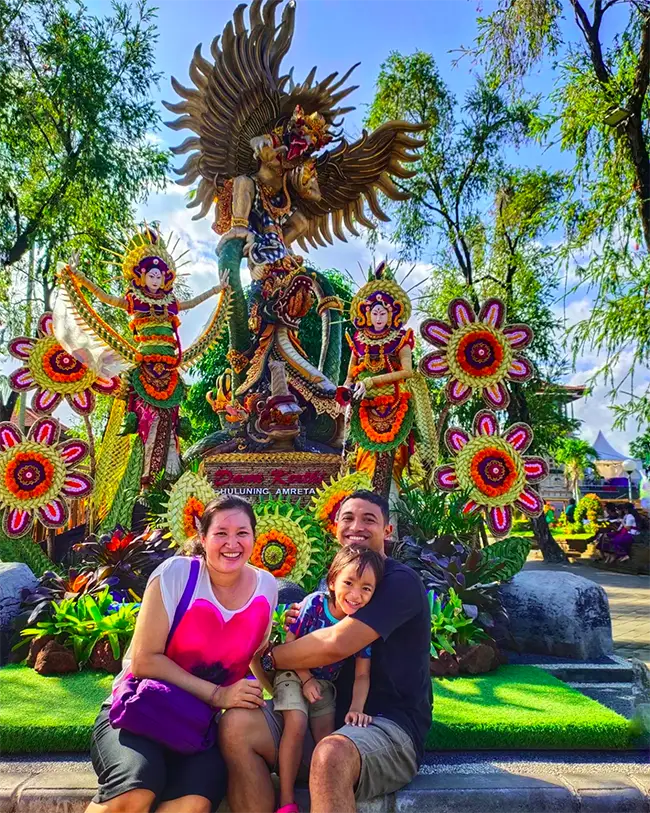
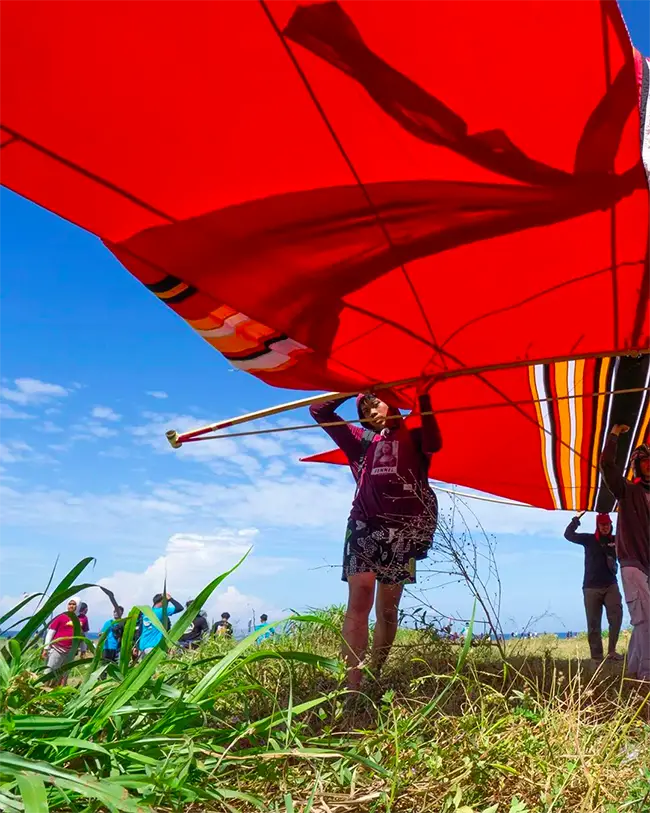
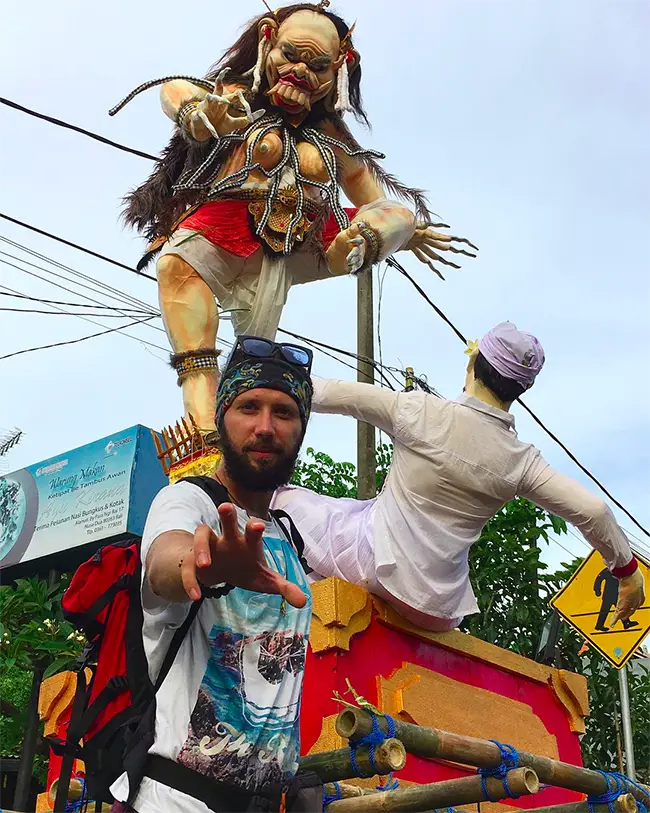
Travel to & getting around Bali
How do you get there? And how do you get around? Read on for the answers!
Arrival
Chances are you’re arriving in Bali by plane through Ngurah Rai International Airport (DPS) in Tuban south of Kuta. This is the main arrival point for millions of visitors each year, with only a small percentage arriving via ferry from elsewhere in Indonesia.
Bali’s airport connects well with domestic and international locations, and it has all the refreshment stations, shops and amenities you could want from an international airport, including free wifi.
Upon arrival at the airport, you will need to have your documents to hand. Note: you should apply for your visa online before arriving in Bali and complete your customs declaration form. This will speed up your immigration process and means you don’t have to rely on spotty WiFi in the customs queue. In fact some airlines will ask for proof of your customs form before allowing you to check in for your flight to Indonesia.
After you’ve collected your luggage, you’ll proceed through customs – this is where you’ll need to show & scan the QR code you receive after completing your customs declaration. After that, you may be directed to the right to get your luggage scanned otherwise you’ll be directed left towards the exit.
Once through customs, you can make use of the safe ATMs and reputable currency exchangers in the arrivals area. Note: you’ll get the best rates by just drawing out cash using your debit card. Especially if you have an account that doesn’t charge fees for international withdrawals – otherwise get yourself a free Curve card.
It’s also worth picking up a SIM card for Bali in the airport to avoid paying extortionate roaming fees. In the arrivals area you’ll see a few stalls selling SIM cards with various call and data deals.
Our advice is to opt for the Telkomsel Tourist Prepaid SIM, which offers a fantastic deal – you can order it online, then pick it up on arrival at the airport in Bali. Or, get one delivered to your hotel. Alternatively look into eSIM companies such as Airalo, and then you won’t even have to worry about picking up a physical SIM.



Getting to your accommodation from the airport
Unfortunately, the arrivals hall at Bali’s airport can be the most stressful part of your holiday. It’s a chaotic experience filled with competitive taxi drivers vying for your business and taking advantage of your confusion and jet lag to charge unfair prices.
The easiest way to avoid this is to pre-book your airport transfer. First, check with your accommodation to see if they provide a complimentary shuttle. If not, book your airport transfer online. This way, someone will be waiting for you in the designated area for pre-booked drivers with your name on a sign. They will guide you past the crush of touts and into a waiting vehicle, stress-free.
The other solution is to use Grab, a ride app similar to Uber – available on iOS and Android. Grab cuts through the stress by allowing you to prebook, and see the cost of your transfer, cutting out the haggling and overcharging issues common with airport taxis.
Bypass the scrum in arrivals and ignore any drivers claiming to be from Grab in the arrivals hall. Grab drivers do not park with the other taxis so anyone claiming to be a Grab driver here – even if they show you an app and have the logo visible – are a scam.
Instead head for the Grab airport lounge, where you can sit in peace, and even charge your phone while you use the app, or ask one of the staff to order you a car, and wait for your driver to arrive. You’re not charged until after a successful drop off and you can choose to tip the driver through the app.
Being a regular visitor to the island, this is my preferred transport method whenever I’m returning to Bali. I have the Grab app on my phone, I fill in the info while waiting at baggage claim, then order the car as soon as I clear customs and head to the Grab lounge to wait. The car usually arrives in two to three minutes.


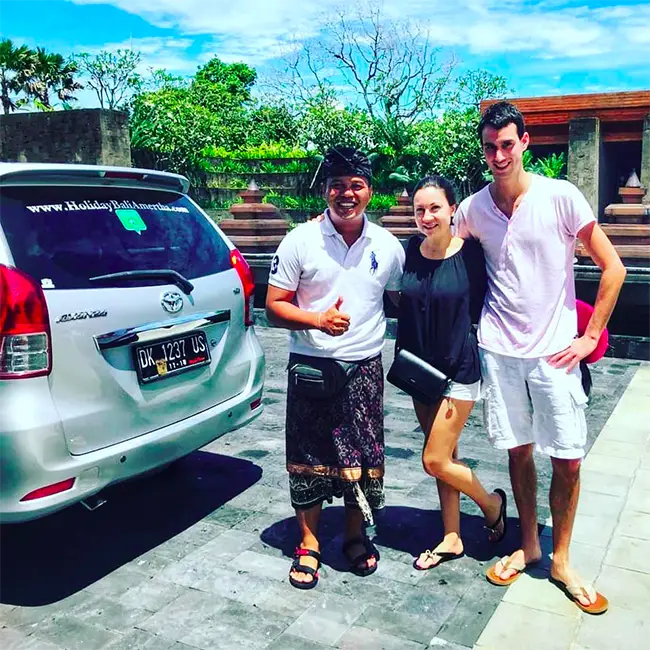
Getting around Bali
We highly recommend getting out of your accommodation and wandering around the immediate area. Exploring on foot will let you soak up the Balinese atmosphere and see things you’d miss in a car. You can also borrow or hire a bike from your accommodation. This is ideal if you’re staying in a smaller town and if your accommodation is near the beach or tucked into the countryside around rice fields.
Taxis are widely available in Bali and easy to flag down since they’re constantly on the lookout for tourists wanting a ride. Bluebird taxis are the most reliable and trustworthy so look out for their logo when hailing a car. However, several copy-cat companies masquerade as Bluebird with similar colour schemes and signage (such as Bluebiro cars which will not use the metre and charge you well over the going rate), so be wary.
If you’re worried about flagging down a taxi, Bluebird has an app (available on iOS and Android) which you can use to pre-book and pay electronically. Or ask your accommodation to call and book for you.
When you get in the taxi, you have two options – ask for the metre to be switched on (best for short journeys), or agree on a price in advance (more common for longer trips). There is an issue with taxi scams in Bali, as in many tourist destinations, where drivers might quote you an extortionately high price or switch on the metre but drive you a circuitous route to bump the fare up.
The only way to avoid these issues is to be vigilant. Research the cost to specific destinations beforehand by looking at what they would cost if you booked through the Grab, GoJek or Bluebird apps, and then don’t be afraid to negotiate. Also pull up a Google Maps route to follow and ensure you’re not going all around the houses.
That being said, don’t immediately blame your diver if the route takes longer than Google Maps tells you! You must allow for Bali’s dodgy roads and thick traffic, especially in rush hour or for the roads being closed because of a local Balinese ceremony – a fairly regular occurrence.
Grab, GoJek & private drivers
Another option is to use a rideshare app like Grab or GoJek. This is our preferred method of travel whenever possible because the fares are much cheaper, and it cuts out all the hassle of flagging down taxis and haggling over price. Plus, they offer scooter taxis which are an experience in themselves.
If you’re planning a day of island exploring, consider engaging a private driver rather than taking individual taxis. This can work out better value, involve less stress and give you more flexibility and control over your schedule. You’ll probably get a nicer vehicle too. Again you can now book these through Grab and GoJek by looking at the GoCar and GrabCar sections of their apps.
Car hire
Car rental agencies are available in Bali. However, this is an option only for confident drivers as the traffic and road conditions in Bali are notoriously challenging. If you choose this option, ensure you have an international driving permit and the correct insurance. But honestly, we’d recommend opting for a private driver instead. It’s a much more laid-back way to see the island. Plus you can take Bintang breaks without worrying about being over the limit.
Scooter hire
Renting a scooter is one of the most popular ways to explore the island and certainly the cheapest. You can rent a scooter for a few pounds a day, but the longer you rent one for the cheaper they are, so consider hiring one for your entire stay and cruising around the whole island. GoSend (find it on the GoJek app) offers a fantastically cheap luggage transfer system so you can send your backpack or suitcase ahead to your next destination and follow behind on your scooter enjoying a leisurely journey.
However, be aware that you will be driving in challenging conditions around a lot of traffic with road rules and etiquette far different to that of western countries. Bali is not the place to try out a scooter for the first time, nor is it wise for nervous drivers. Every year tourists end up in scooter accidents with injuries ranging from scrapes and grazes to serious hospitalisation.
I’m not a confident driver on the best of roads, but really wanted the scooter experience. So I let my much more competent travel partner take the driving seat while I sat on the back, navigating via Google Maps and enjoying the view. Personally, I think I got the best end of the deal!
Bali’s government is currently discussing banning all tourists from hiring mopeds because of the high number of issues that occur each year, including traffic violations, collisions, incidences of drunk driving, and driving without a helmet or licence. If the ban goes through, it would be a real shame for the tourist experience and the vendors who make money renting scooters.
So if you do go and rent a bike, be safe, be sensible and play by the rules. It’s for the good of everyone!
Public transport
Public transport exists in Bali, but it’s a little erratic, no logical system connects the whole island, and it can be a hot and dusty way to travel. However, if you’re sticking to a shoestring budget, it can be worth checking out.
The new public transport bus is the Trans Metro Dewata, it operates five main routes (or ‘corridors’) which you can use to get from Denpasar to the airport, Bukit Peninsula, Garuda Wisnu Kencana Cultural Park, Sanur, Kuta, Ubud and the Sacred Monkey Forest.
It’s not possible to pay by cash or debit / credit on these buses so you’ll need an Indonesian non-cash card (like a metro or Oyster card that you’d use at home). Pick up a non-cash card at BCA, BNI Mandiri, or NRI banks, or shops like Indomaret, Alfamart and some 7-Elevens. They cost IDR 37,500 (£2 / US$2.5) and then you load money onto them in multiples of IDR 50,000.
Another option is to use one of the tourist shuttles. The most popular of these is the Kura-Kura, or Turtle Bus, which connects the most popular locations, such as the south coast resort areas and Ubud. It has an app where you can book seats and follow the progress of the bus in real time.
Note: the Kura-Kura bus shut down during the pandemic and is only slowly getting back up and running again. It’s currently only running a small minibus between Kuta and Ubud but plans to open its other lines again soon.
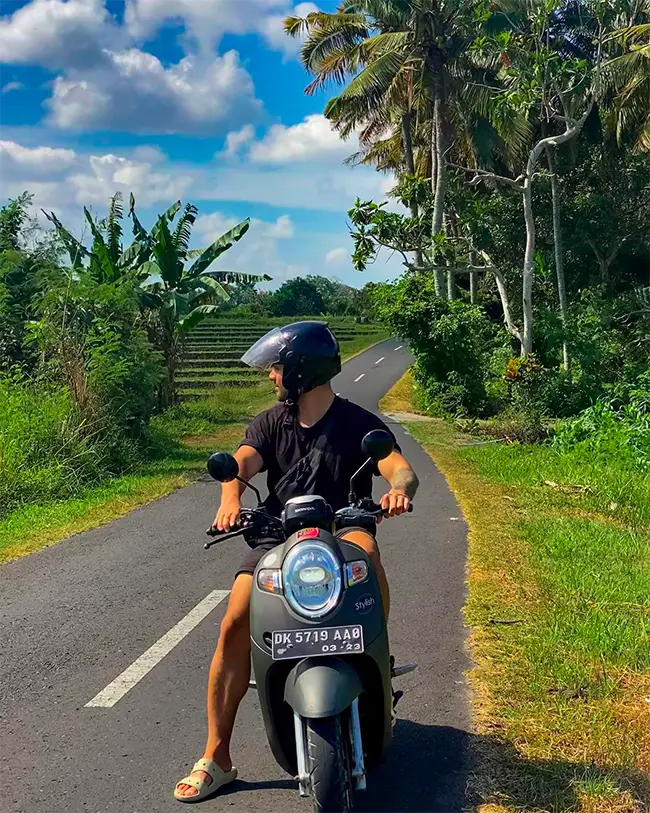

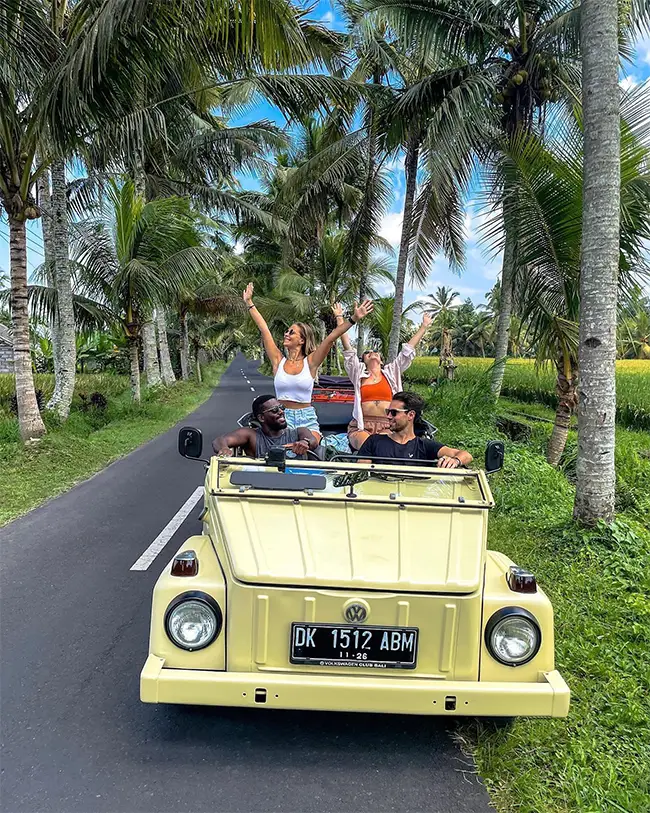
Need to know
Here’s a quick guide to all those areas that cause the most concern when planning a trip somewhere new.
Language
There are three main languages spoken in Bali:
- Indonesian (or Bahasa Indonesia, as it’s referred to in Indonesia).
- Balinese – the various indigenous languages of the island, which come in a range of dialects used according to the region and situation.
- English – the unofficial third language of Bali.
Yet another thing which makes Bali such an easy and enjoyable place to travel to is that English is widely spoken. Most people in Bali have at least a few words of English, with most tourism and hospitality workers having a decent grasp of the language.
Plus, in the popular touristy areas, most menus, tour posters, and signs are translated into English and often French, German and / or Spanish. You’ll often find that tour guides speak multiple languages, too, so don’t be afraid to ask for a trip or tour in your native tongue.
But while it’ll be easy enough to make yourself understood in English, it’s always a good idea to attempt the local language when you travel. It shows respect for the local people and will deepen your experience of the place, plus it’s good fun!So get a guidebook or language app and learn a few key words before you go. Focus on Indonesian rather than the Balinese dialects, as it’s more universal.
Here are a few words for you to start with:
| English | Indonesian | Balinese |
|---|---|---|
| Hello, how are you? | Halo, apa kabar? | Engken kabare |
| Goodbye | Selamat tinggal | Benjang kancundung malih |
| Please | Silahkan | Durusang |
| Thank you | Terima kasih | Suksma |
| You’re welcome | Sama sama | Suksma mewali |
| Sorry | Maaf | Nunas ampura |
| Yes / No | Ya / Tidak | Ngih / Ten |
| Cheers! | Bersulang! | Dumogi |



Safety
Bali is generally a safe destination with few dangers or risks. However, there are a few things to be aware of:
First, use the same level of common sense you use at home to protect yourself and your belongings. Take care when drinking or walking around late at night, be aware of your surroundings, especially in crowded areas or at night, and avoid carrying or displaying large amounts of cash.
One of the biggest hazards in Bali is the traffic, especially in Kuta and the south of the island. So, take care when crossing roads, keep a close eye on children, and if you choose to drive or ride a scooter, ensure you have the correct insurance and always wear your helmet.
Some of the beaches have powerful currents and swell. While this makes them ideal for surfing, it can make them dangerous for swimming and tourists have been swept out to sea. So pay attention to warning signs before hitting the water, only swim between the flags, and if a beach is closed for swimming don’t take the risk! Also if you’re a beginner surfer, only head out with a lesson or instructor.
Scams exist even in this paradise, and the most common ones are shady money exchangers and fake tour operators. The easiest way to avoid these is to ask for advice from your accommodation, use money exchangers attached to banks and ATMs located in banks or inside convenience stores where they’re less likely to have been tampered with. Also, be sure to thoroughly research tours through review sites like Tripadvisor and book via reputable sites like Klook, Get Your Guide or Viator and be aware of copy-cat tours using a similar name as a successful company. And always trust your gut. If something feels off, don’t be afraid to walk away.
Health wise, there are just a few things to be aware of:
- Exercise basic hygiene when it comes to eating. Wash your hands thoroughly before meals and use caution when purchasing street food.
- Tap water is not generally safe to drink in Bali, so opt for bottled or filtered water instead (take a reusable bottle with you to lessen your environmental impact).
- The sun is powerful, so use sunscreen, wear a hat during peak hours, and stay hydrated. Tip: Suncream is crazy expensive in Bali so make sure you take plenty with you.
- Mosquitoes can be an issue. They are everywhere (except the Bukit Peninsula thanks to its arid climate) and are especially bad in the wet season. So carry repellent, wear long sleeves and trousers in mosquito-heavy areas, and sleep under a mosquito net. Tip: for a mozzie-free nights sleep mist your room with Hit Expert aerosol. One squirt of this stuff will disperse quickly throughout your room in a fine fume-free mist and ensure you have a bite-free night. Buy small cans of it in the local supermarkets.


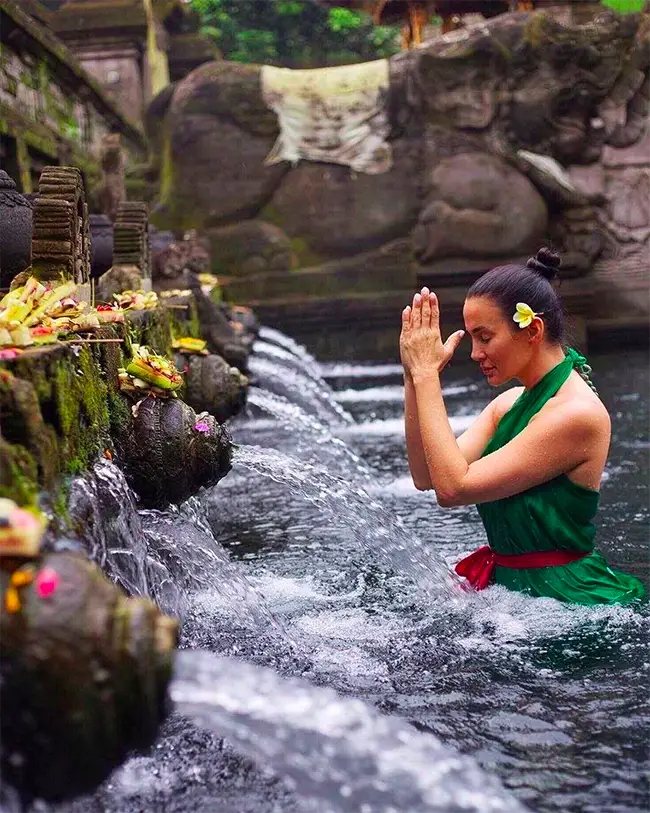
Insurance
Always make sure you have travel insurance before heading to Bali, and please please please do your research and get a comprehensive plan with excellent medical coverage and check that any activities you plan to do are covered.
The mistake many travellers make is to think that so long as they have travel insurance, any travel insurance, they’re covered for everything. So they buy the cheapest policy and then get a nasty shock when they have an accident or injury and discover that it’s not covered by their policy. You need to do proper, in depth research and read your policy carefully so you know what it covers.
For example:
- Will you be reimbursed if your flight is cancelled? What about any connecting flights that were affected?
- What if you miss your flight? Are you covered for all reasons or are only some accepted?
- Are watersports covered? Does that include scuba diving or only surface sports like surfing and snorkelling?
- Are you covered if you hire a car? What about a scooter – something you definitely want covered in Bali.
- Are you going climbing or backcountry hiking? What if you get lost or injured? You’ll need to ensure search and rescue is included, because helicopters don’t come cheap!
- And something new that we now have to consider when embarking on a longer trip: Does your policy have a pandemic section? Does it have clear unambiguous wording explaining what would happen should the borders close again and you get stranded in a foreign country?
Lastly, always make sure your policy has excellent medical coverage.
This can mean the difference between getting life saving medical care or not. Plus it can save you considerable amounts of money as medical bills can escalate quickly and easily reach six figures.
Ensure that you are also covered for repatriation in the case of injury so you can be safely transported home to get the treatment you need.
Also, make sure that you disclose any pre-existing medical conditions when searching for a policy. If you don’t disclose an issue and you need treatment or medication for it while away, your insurance is within their rights to refuse to cover it.
Prescription medications
If you’re taking prescription or over the counter medications with you to Indonesia there are a few things you need to do.
First you need to check the legal status and regulation of the medication as it may be different to other countries. Contact the Indonesian Embassy in your home country to determine if your medication can be brought into the country or not.
Secondly, your medications must be carried in their original packaging and you must carry a copy of the prescription and a doctor’s medical report detailing your condition, the medication prescribed and the dosage. If you email your GP for this they will know what to give you as it’s a common request.
Thirdly, do not carry more of the medication than you will need for the amount of days you are in the country.
If you don’t abide by these rules you may find the medication is confiscated at customs and you may have to pay a fine as well as being without the medication you need while on holiday.



Money
The currency in Bali is the Indonesian Rupiah (Rp) which at the time of writing had an exchange rate of 1 GBP = 18,565.9 IDR, and 1 USD = 14,930.1 IDR
ATMs are prevalent across Bali’s built-up areas, especially in the south, but they get less common in remote areas, so make sure to draw cash out before heading off the beaten track.
Top tip: always travel with a second bank card for a different account and keep it separate from the main card you use, leaving it back at the hotel when you go out. This will come in handy if an ATM swallows your card or it gets lost or stolen
A second bank account is also handy in case your bank’s fraud department flags your primary account for unusual activities while you’re abroad and freezes your card. This happened to me once and had I not had a second account to fall back on I would have suffered several very frugal days until the bank fixed the issue!
Credit cards, debit cards and contactless payments are accepted at most mid-range businesses, accommodations shops and restaurants. And since the pandemic all businesses were encouraged to switch to contactless payments.
However, it’s still wise to carry cash for paying for smaller businesses, market stalls, warungs, beach bars, and roadside gasoline stands – although even these are in the process of switching over to app payment. Small operations might struggle to change large bills, so try and break those at larger establishments. Plus, it’s handy to carry cash for tipping.
Tipping is not mandatory in Bali you can choose to do so as and when you like. It’s always nice to tip a tour guide or someone who has given you exemplary service but don’t feel like you have to.
The prices you see for food and drink in restaurants and bars don’t include VAT and service charges so expect your bill to be higher when it comes. And look out for the service charge so that you don’t end up tipping twice.



Visas
One of the most anxiety-inducing elements of any trip is ensuring you have the right paperwork before you travel. Luckily, Bali’s entry process is pretty straightforward, another reason why it’s a popular destination.
- Visitors from ASEAN member states, do not require a visa.
- Most other nationalities can obtain a Visa on Arrival (VoA) that lasts for 30 days and costs IDR 500,000 (around £25). The VoA can be obtained when you arrive. However, it can now also be purchased online before arrival, simplifying the process. To apply for the VoA, travellers need a passport with at least six months of validity and will be asked to show proof of a return or onward ticket when arriving in Indonesia.
And if you’re planning on staying longer than 30-days, you have a couple of options to extend your time:
- The VoA can be extended for an additional 30 days either by you or with the help of a visa agent.
- Another option is to leave Bali before your visa expires and then return, effectively resetting the visa. You have to leave Indonesia altogether. Singapore used to be a popular destination for a visa run but they are cracking down on this and same day visa runs are no longer a good idea as you may get pulled aside by immigration and held for questioning for hours, causing you to miss your flight. Instead choose to stay a few days and see somewhere new. I chose to visit Penang, Malaysia and turned it into a mini holiday staying for five days. I can highly recommend it to anyone who loves trying new foods. I did nothing but eat the whole time I was there. It was fantastic!
- For longer stays, there’s the B211A e-Visa which is valid for 60 days and can be extended twice, granting a total of 180 days. This e-Visa is particularly popular among long-term travellers and digital nomads.



Showing respect
Bali has a rich and diverse culture in which religion, spirituality and history loom large in day-to-day life. Therefore, it is important when visiting Bali – and anywhere – to respect the tradition and culture, even if the customs are alien to yours.
Follow these simple guidelines to avoid giving offence:
- Dress modestly. Bali has a pretty casual dress code. You’ll see people wandering around in shorts and shirts, vests and dresses especially in the tourist areas. But even in the most touristy of places it’s considered disrespectful for a woman to be in just a bikini anywhere other than on the beach or in the beach clubs, so cover up when you leave the sand, guys should put tops on too. When you visit more remote areas consider dressing more conservatively and if you visit temples or sacred sites, you must dress appropriately. This means covering up from your shoulders to knees and applies to both men and women.
- Follow temple etiquette. Remember that Bali’s many temples are not just tourist attractions, they are functioning sacred sites, so it’s important to behave appropriately when visiting. Be mindful of your behaviour, maintain a quiet and respectful demeanour, avoid PDAs, don’t interrupt ceremonies, and always ask for permission before taking photos, including selfies.
- Be friendly and polite: The Balinese people are renowned for their welcoming nature and hospitality. Respond in kind by smiling and greeting everyone you meet politely. Bonus points if you do it in Indonesian!
- Observe local customs – these include:
- Don’t touch anyone on the head. It is considered to be the place where the soul lives and, therefore, sacred.
- Don’t point at or touch anyone with your feet or left hand. Both of these are considered unclean. Also refrain from putting bare feet up on stools or chairs as it is offensive to show off the soles of your feet to Balinese people.
- Take care not to step on the Caning Sari. These colourful offerings are placed at shrines daily and you’ll see them lying in the road and on pavements outside businesses and in the entrance areas of villas and hotels. It’s considered disrespectful and bad luck to step on them.
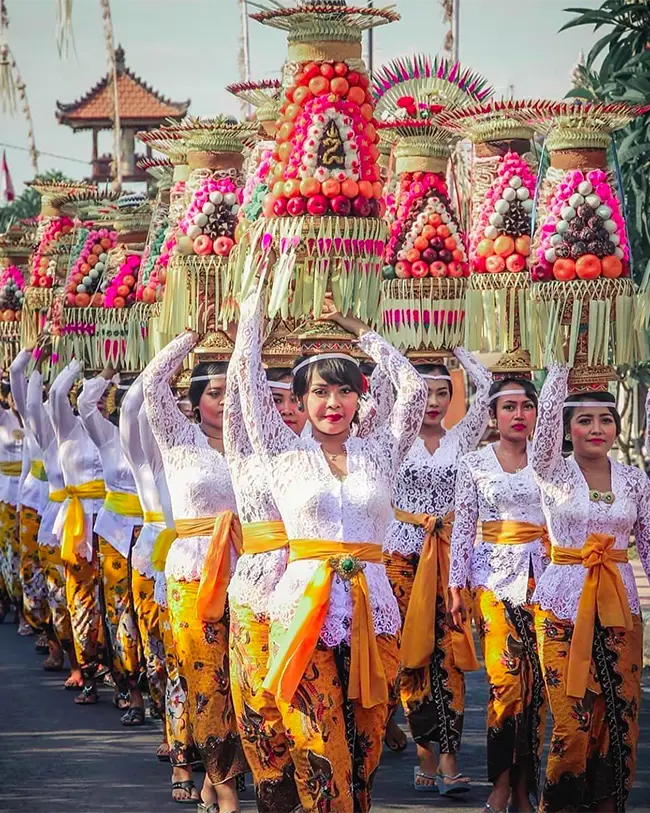


Best time to visit Bali
Bali is an all-year-round destination! Of course, it has high and low seasons and wet and dry seasons thanks to its tropical climate, but there is genuinely no time of year when this island isn’t worth visiting.
The high season runs from late June – August and experiences a peak around the December holidays also. During these times, the island is busy, lively and full of events and vibrant energy. Prices and crowds do spike, so you should be organised with your plans. Book accommodation, activities and transport further in advance to avoid places filling up.
The low season is roughly from November – April (excluding the Christmas and new year periods). You can expect fewer crowds and good deals on accommodation and flights during this time. These months also coincide with the rainy season, but that’s no reason not to visit, as rainfall is rarely excessive or prolonged, temperatures stay high, and most activities can still be enjoyed.
Shoulder season includes May, June, September, and October. These months enjoy some of the best weather in Bali with low rainfall and humidity. The prices are reasonable, and it’s less crowded than in high season while still attracting enough people to have a good atmosphere on the beaches and in the bars. These can be some of the best months to visit Bali.


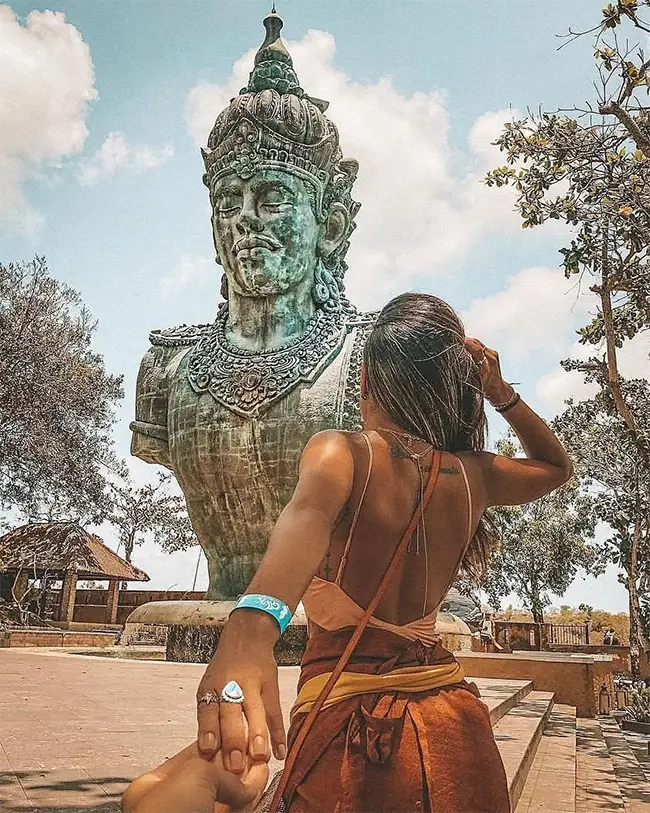
Top tips for first timers in Bali
And to finish with, here are our five top tips for enjoying your first trip to Bali:
- Try the local food: Bali has a rich culinary scene, and trying as many traditional dishes as possible from street carts, warungs and restaurants is a must.
- Get into the island’s interior: much as we love Bali’s beaches, you’d be missing out if you didn’t take at least one day out of your holiday to explore the lush greenery of the island’s interior. Why not hire a scooter or a driver for the day and visit some waterfalls, rice terraces, jungles and coffee farms?
- Shop at the markets: Bali is known for its vibrant markets, where you can find everything from handmade crafts to fresh produce. And haggling is expected, so get in there and try and bag yourself a bargain!
- Visit during the shoulder season: May, June, September, and October are great months to visit Bali. The weather is excellent, the prices are lower, and the crowds are smaller. Perfect!
- Relax! Bali is an easy place to travel. Its laid-back vibes, welcoming people, and lack of hazards go a long way to make visitors feel at home. You can get by with basic English. If you’ve forgotten something, you’ll almost certainly be able to buy it on the island, and if something goes wrong, medical care and pharmacies are readily available and used to dealing with tourists. So don’t stress, kick back, and enjoy your dream holiday.


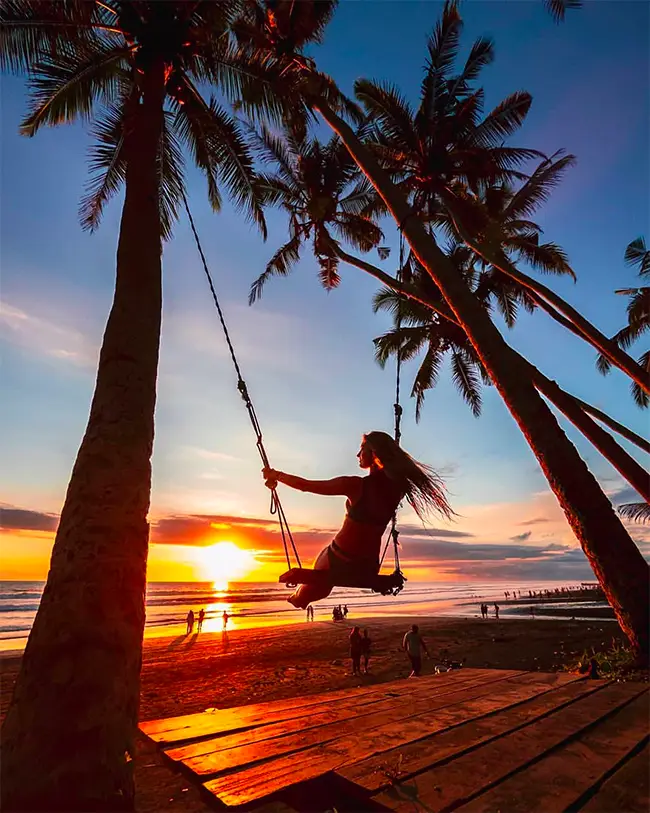
That’s it!
Hopefully, we’ve covered everything you need to know before embarking on your first trip to Bali! If this has inspired you to visit this paradise island for the first time, book your perfect holiday accommodation now and start counting down to your dream holiday. And if we’ve missed something and you still have questions or concerns, reach out in the comments section below, and we’ll do our best to answer your questions!
See you in Bali!
Bali holds a special place in Anita’s heart. She loves everything about it, from the beautiful beaches and incredible hiking to the relaxed atmosphere and friendly people. She spent her time in Bali learning to scuba dive, taking yoga classes on the cliffs of Uluwatu and exploring hidden waterfalls by scooter in the forests around Ubud.
